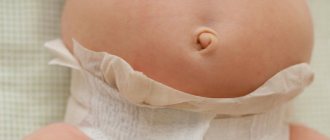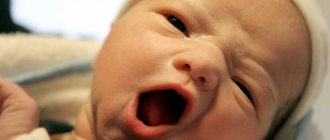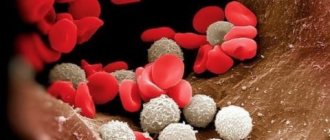Prebiotic "Hilak Forte"
One of the most effective drugs in the treatment of dysbiosis is “Hilak Forte” produced in Germany. The drug contains metabolic products of beneficial bacteria that help the development of normal intestinal microflora. Drops are recommended to be taken during and after treatment with antibiotics to prevent the development of dysbiosis in children and adults. The prebiotic will also help cope with the problem of constipation and diarrhea against the background of infectious pathologies, and eliminate colic and bloating in infants.
The product can be used from birth. Add drops to the feeding mixture or dilute with boiled water. The dosage for infants is 5-10 drops; children over 2 years old are allowed to take 20-30 drops of the prebiotic.
What is the difference between prebiotics and probiotics?
Prebiotics are substances that have a positive effect on the condition of the intestines, stimulating the growth of beneficial microorganisms. Prebiotics, unlike probiotics, refer to chemicals found in various foods. When interacting, they complement each other and accelerate the process of microflora restoration. That is, prebiotics provide the necessary favorable conditions for the development of living beneficial bacteria, but they do not have any therapeutic effect.
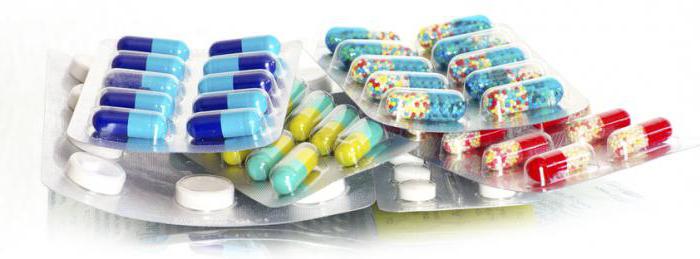
Many experts recommend taking probiotics and prebiotics at the same time. For children, preparations that simultaneously contain live bacteria and substances that act as a breeding ground for beneficial bacteria are good. Prebiotics also help reduce the number of pathogenic microorganisms, maintain an optimal level of acidity, and eliminate increased gas formation. They are not digested in the upper digestive tract, but are broken down only when they enter the large intestine.
Classification of probiotics
Today, there are five generations of drugs that normalize the child’s microflora:
- monoprobiotics (containing one strain of bacteria);
- polyprobiotics (contains several strains of bacteria and some additives);
- self-eliminating antagonists (do not contain lactose);
- synbiotics (combined with enterosorbents);
- metabolic probiotics.
According to the type of bacteria included in probiotics for children, the division is as follows:
- bifido-containing;
- lactose-containing;
- coli-containing;
- yeast-like fungi;
- enterococci.
If we talk about the aggregate state of probiotics, there are liquid and dry forms. Liquid preparations include solutions and suspensions that have not undergone a drying process. They have a number of advantages: they act quickly, contain additional ingredients, and can be taken not only internally. Dry probiotics are a fine powder containing specially dried microorganisms. They can be produced in the form of powders for the preparation of suspensions, capsules or tablets, which begin to act after 1-3 hours.
Probiotic preparations for children may contain lactic acid or donor strains, as well as antagonists. The first group includes bacteria that have the ability to produce lactic acid, which is necessary to maintain normal acidity in the intestines. Donor strains are microorganisms that make up the normal microflora of the human intestine. And antagonists are bacteria that do not live in the child’s body, but can have a beneficial effect when taken orally.
Types of probiotics
Bacteria useful for digestion and the bioactive additives that contain them can be divided into several types (generations).
- 1st generation. The first generation includes single-component preparations containing only one culture (strain) of beneficial bacteria. These drugs include: Bifidumbacterin, Lactobacterin, Colibacterin.
- 2nd generation. The second generation represents self-eliminating antagonists. Such a complex and cumbersome name means that these bacteria are not permanent residents of the human gastrointestinal tract and, when they get there, are quickly eliminated from the body. However, this does not diminish their role in digestion, which is why special preparations are produced that can be used to intentionally “plant” beneficial microflora. The course of treatment is enough for the bacteria to have a positive effect on the intestines. They are prescribed for mild forms of poisoning, compensated dysbacteriosis, and non-infectious diarrhea. This category of bacteria mainly includes yeast-like fungi and spore-forming bacteria. Among the representatives of the second generation are: Biosporin, Baktisubtil, Sporobacterin.
- 3rd generation. The third generation of probiotics (symbiotics) is most widely used due to its versatility. The drugs contain several strains of bacteria or additives that enhance their effect, which can significantly influence the digestion process and protect the gastric mucosa from the effects of aggressive drugs. For example, this applies to antibiotics - when prescribing this category of drugs, it is extremely important to maintain the balance of microflora, otherwise, instead of curing the infection, the patient will develop digestive problems. The category of multicomponent drugs includes Bifiliz, Linex, Acipol, Bifiform, Acylact.
- 4th generation. The fourth generation includes sorbed probiotics. This makes it possible to introduce not just single bacteria into the digestive tract, but entire colonies of microorganisms. Once in the gastrointestinal tract, they are able to attach to the walls of the mucosa, thereby providing a dense membrane. Such probiotics are called live; they provide the greatest effect, remaining active for a long time. Probiotics of this generation are Probifor, Bifidumbacterin forte, Florin forte.

Probiotics for constipation in children
Many parents know that constipation is a common and annoying problem in babies and children. There are certain strains of probiotic bacteria that have been clinically proven to be effective in relieving constipation in children. They are also suitable for treating constipation in adults, so it is recommended that both children and adults take probiotics.
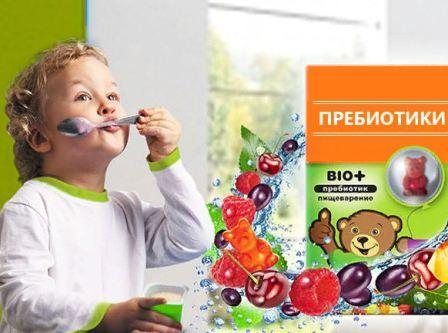
Bifidobacteria
One of the main types of bacteria that form healthy intestinal flora in infants is Bifidobacteria. This strain is the dominant and most important of the beneficial bacteria in the gut. Occurs in healthy newborns and children in the first years of their life.
According to a study conducted by American scientists, taking probiotic strains of bifidobacteria contributed to more frequent bowel movements.
B. infantis is one of the dominant bacterial species found in the intestines of healthy children.
Lactobacilli (Lactobacilli)
We are closely familiar with this strain of bacteria - they are found in yogurt, which is sold in grocery stores. Lactobacilli help in the treatment of chronic constipation in both children and adults.
Patients in the study reported a significant reduction in constipation after two weeks of regularly taking lactobacilli supplements.
Lactobacilli and bifidobacteria help soften stools. They also increase the frequency of bowel movements in children with irritable bowel syndrome or chronic constipation.
Recommended strains of bacteria for constipation
Considering the huge number of drugs and companies producing probiotics, it is difficult to name any specific drugs, but when choosing, it is recommended to focus on the composition below.
Probiotics recommended for constipation in children should contain the following strains of bacteria:
- Bifidobacterium bifidum W23.
- Bifidobacterium lactis W52.
- Bifidobacterium longum W108.
- Lactobacillus W79.
- Lactobacillus plantarum W62.
- Lactobacillus rhamnosus W71.
The dosage should always be determined by a pediatrician, who takes into account the condition of the child’s body and medical history.
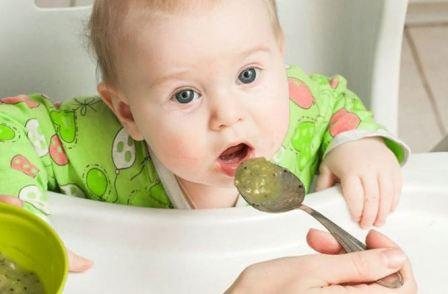
You need to take probiotics correctly!
When buying probiotics for children, the names of which are replete with names on every corner, remember that the best option is the liquid form. Such preparations already contain a nutrient medium for microorganisms, which helps them multiply and grow. For older children, you can purchase powders for the preparation of suspensions or capsules, which have a detachable structure for ease of administration.
When treating a child with drugs containing live microorganisms, the following rules must be observed:
- follow the dosage and frequency of administration of the drug as determined by the doctor;
- store the drug according to the temperature conditions and expiration date specified in the instructions;
- It is necessary to wash down “live” medications only with water or juice at strictly room temperature;
- for the treatment of chronic diseases, the course ranges from 14 to 21 days, but if the condition is acute, then 5-7 days;
- oral administration is carried out 30 minutes before meals or an hour after (some drugs can be added directly to warm food).
Can you overdose on probiotics? The answer is obvious: no. Even if you take a huge amount of the drug, the body will remove excess bacteria unchanged in a natural way. There will be no harmful effect other than heaviness in the stomach.
Probiotics – what are they?
Probiotics are beneficial microorganisms that inhabit the intestines in a healthy state. They have a detrimental effect on pathogenic bacteria and are able to restore normal microflora after illness. Probiotics are found in specially formulated preparations or added to certain foods, such as yoghurt.
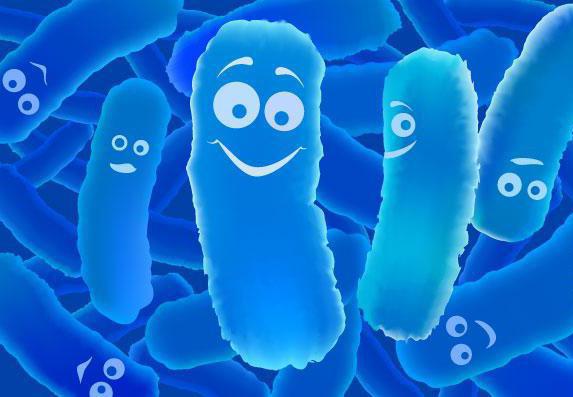
The very first probiotic that humans began to use is Lactobacillus bolgaricus. Bulgarian lactobacilli have been actively used for the production of fermented milk products. This technology is still followed in many countries. In addition to lactobacilli, the preparations may include bifidobacteria, yeast fungi, and enterococci.
Indications for probiotics
The drug has proven its effectiveness in restoring intestinal microflora. Due to this, it is used as an effective medicine and prevention of the development of intestinal diseases.
Regular use significantly strengthens the functioning of the immune system and prevents the development of serious diseases. Probiotics in liquid form are used as one of the elements of complex therapy.
With their help, it is possible to get rid of the following diseases within a short time:
We recommend reading: How to give Linex to a baby
- With dysbacteriosis, a deterioration in the state of microflora in the intestines is recorded. This clinical picture often haunts bottle-fed infants. Probiotics should be taken after antibiotic treatment. The situation is also aggravated by the development of intestinal infection. In this case, the pediatrician may prescribe a drug that contains several beneficial microorganisms. This group includes Linex, Hilak Forte, Probifor.
- Probiotics help to cope with an acute infection in the intestines for a short period of time. To eliminate the disease it is necessary to take antibiotics. With the help of probiotics it will be possible to prevent the development of complications. Bifidumbacterin, Acipol, Biovestin help eliminate diarrhea.
- In infancy, children often experience allergic reactions to the skin. Probiotics help reduce their intensity. Thanks to them, it is possible to trigger the mechanism for the production of antibodies in the child’s body. Trilact, Linex, and Bifiliz have already proven their effectiveness in the fight against atopic dermatitis.
- Probiotics also help relieve the cause of constipation. They contain a large number of beneficial bacteria that start the process of normalizing digestion. The duration of the course of treatment directly depends on the characteristics of the baby’s body.
- All respiratory diseases develop against the background of a decrease in the level of immunity. Probiotics can help prevent infection. The pediatrician will be able to choose the ideal remedy for long-term prevention that will allow the child to feel good.
- Probiotics help to significantly improve well-being in cases of hepatic encephalopathy and lactose intolerance.

Bowel problems make babies irritable
Is it true that probiotics help a newborn cope with colic? Scientific research has confirmed only the partial truth of this statement. Efficacy has not been shown if the baby is breastfed and constantly suffers from colic. Even a long course of probiotics will not be effective in this case. For children who are fed formula, the situation develops exactly the opposite. That is why probiotics can only be used as prescribed by a doctor.





